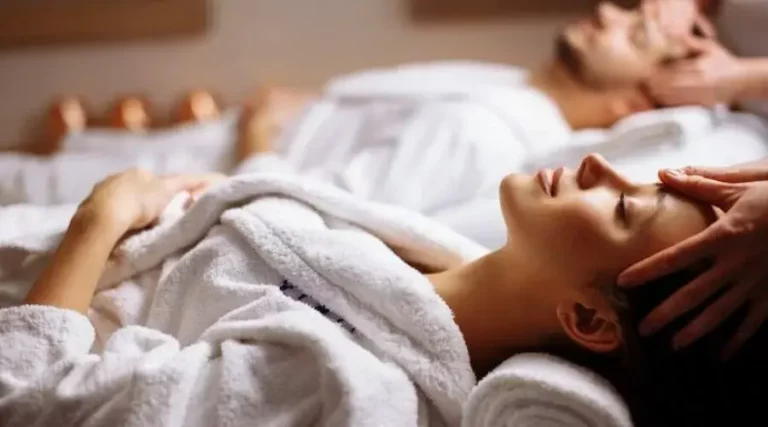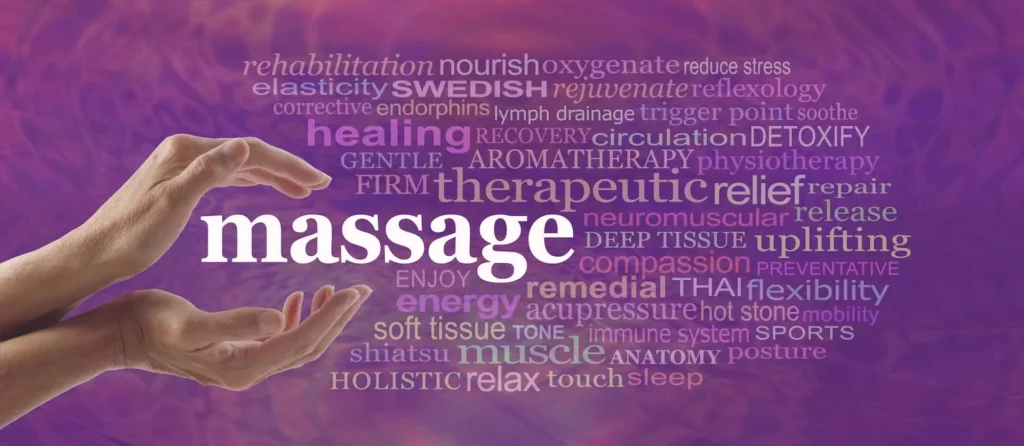Join Us Today! and Discover the Invigorating Power of massage for Renewed Vitality

There is often a feeling of luxury when finding moments of tranquility and self-care and a having a massage At home, however, brings the soothing touch of relaxation to your doorstep!
We are going to explore the benefits of massage, convenience, and sheer bliss of indulging in a professional mobile massage experience from the comfort of your own home or hotel room in this blog.
Bringing convenience to your fingertips:
In London’s fast-paced lifestyle, it can be difficult to take care of yourself. However, benefits of mobile massage services enable you to fully immerse yourself in relaxation without having to leave your home, eliminating the need to travel. Your own space will become a serene oasis when skilled massage therapists arrive with everything they need.
2. Relaxation tailored to your needs:
Mobile massage offers the benefit of tailoring the experience to your specific needs. No matter what you’re looking for, whether it’s a Deep Tissue Massage or Swedish Massage to relax your muscles or a rejuvenating aromatherapy session, professional therapists can tailor their techniques to meet your unique needs.
3. Efficiency in terms of time:
A Visiting massage eliminates the need to navigate London’s bustling streets or contend with rush hour traffic to reach a spa or wellness centre. It allows you to spend more time on self-care and relaxation by having the massage come to your location. With a convenient appointment, you can enjoy a therapeutic session without any unnecessary delays.
4. Comfort and privacy are enhanced:
A massage at your home is ideal for those who prefer a more intimate and private setting. In your own space, you can fully relax without any distractions or concerns about sharing communal facilities. Mobile massage ensures maximum comfort and privacy throughout the session by creating a serene atmosphere tailored to your preferences.
5. Suitable for Special Occasions:
Mobile massage are not just great for personal indulgence, but they are also a great addition to events and special occasions. If you’re planning a birthday party, bachelorette party, or corporate wellness day, having professional massage therapists on-site can elevate the experience and leave a lasting impression.
what is the Best place to have a mobile massage?
You can enjoy a relaxing massage in London directly from the comfort of your own home, offering a convenient, personalised, and immersive experience. Every aspect of mobile massage is designed to provide relaxation and rejuvenation, from the convenience of booking to the skilled touch of therapists.
Why not give the gift of a mobile massage and enjoy the blissful moments of tranquility London has to offer? Relax in your own home as you enjoy the ultimate indulgence and let the stresses of the city melt away.
6. Corporate wellness:
Employers looking to promote wellness can take advantage of our mobile massage online booking system, Treat your employees to a day of rejuvenation by reducing stress, improving circulation, and encouraging relaxation, these massages create a comfortable and connected work environment. Treat your employees to a day of mobile massage service and show them that their well-being is a top priority.
More Benefits of Mobile Massage in London
1. Convenience: massage at your place brings the therapy directly to your location in London, saving you time and eliminating the need to travel to a spa or clinic.
2. Comfort of familiar surroundings: By receiving a massage in the comfort of your own home, office, or hotel room, you can fully relax in a familiar environment, enhancing the overall experience.
3. Personalized experience: Massage therapists often offer personalised sessions tailored to your specific needs and preferences, ensuring you receive the treatment that best suits you.
4. Time-saving: Booking a mobile massage eliminates the time spent commuting to and from a spa, allowing you to maximize your relaxation time.
5. Stress reduction: Massage is known for its stress-relieving benefits, and having a therapist come to you further enhances this by minimising any additional stress or hassle associated with traveling for your appointment.
6. Privacy: Enjoy the privacy and peace of your own space without having to share a massage room with others, allowing you to fully unwind and let go.
7. Accessible for individuals with limited mobility: At home massage accommodates individuals with limited mobility who may find it challenging to visit a traditional spa or clinic.
8. On-demand service: Visiting massage services often offer flexible scheduling and on-demand appointments, allowing you to book a session when it’s most convenient for you.
9. Increased relaxation afterwards: After your outcall massage, you can continue to enjoy the relaxation and benefits without the need to immediately travel back home.
10. Health and well-being benefits: In addition to relaxation, mobile massage can offer numerous health benefits, such as pain relief, improved circulation, reduced muscle tension, and enhanced overall well-being.
Conclusion
At home services and benefits of massage have transformed the way we relax and unwind. With the ability to bring a professional massage therapist to your location, you can enjoy the benefits of a spa experience without the hassle of travel.Whether you choose the convenience of our website and the holistic healing of Massage in London City can offer, our At home massage offers a convenient an personalised way to prioritise your well-being.
So why not treat yourself to a mobile massage?and experience relaxation at your doorstep.
What are the benefits of getting regular massages ?
1. Stress relief: Regular massages can help reduce stress and promote relaxation, allowing the body and mind to unwind.
2. Pain management: Massages can alleviate muscle tension and reduce pain, whether it’s related to chronic conditions like arthritis or acute issues like sports injuries.
4. Enhanced immune system: Studies suggest that regular massages can boost immune function, helping to ward off illnesses and infections.
3. Improved blood circulation: Massage techniques can increase blood flow throughout the body, enhancing oxygen and nutrient delivery to muscles and tissues.
4. Enhanced immune system: Studies suggest that regular massages can boost immune function, helping to ward off illnesses and infections.
5. Reduced anxiety and depression: Massages can stimulate the release of endorphins and serotonin, which are natural mood-enhancing chemicals that can alleviate symptoms of anxiety and depression.
6. Improved sleep quality: By promoting relaxation and reducing stress, massages can help improve sleep quality and alleviate insomnia.
7. Increased flexibility and range of motion: Massage techniques like stretching and joint mobilization can help improve flexibility and range of motion, making movement easier and preventing injury.
8. Lower blood pressure: Regular massages have been linked to a decrease in both systolic and diastolic blood pressure, promoting better cardiovascular health.
9. Headache relief: Massages targeting the head, neck, and shoulders can relieve tension headaches and migraines, reducing their frequency and intensity.
9. Headache relief: Massages targeting the head, neck, and shoulders can relieve tension headaches and migraines, reducing their frequency and intensity.
10. Faster recovery from exercise or injury: Massage techniques can help speed up the recovery process by reducing muscle soreness, improving circulation, and enhancing tissue repair.
How often I should Book a massage?
The frequency of getting regular massages can vary depending on individual needs and preferences. Here are some general guidelines to consider:
1. Stress relief and relaxation: If you’re seeking regular massage primarily for stress relief and relaxation, once a month or every few weeks may be sufficient to maintain the benefits and manage stress levels.
2. Muscular tension and chronic pain: For individuals dealing with muscular tension, chronic pain, or specific conditions, more frequent sessions may be necessary. This could range from weekly to bi-weekly appointments to help alleviate symptoms and promote healing.
3. Performance enhancement and sports recovery: Athletes or individuals engaging in intense physical activities may benefit from more frequent massages for performance enhancement and recovery. This could involve weekly or bi-weekly sessions, especially during training periods or prior to important events.
4. Maintenance and preventative care: Many people incorporate regular massages as part of their overall health and self-care routine. In this case, receiving a massage every 4-6 weeks can help maintain muscular flexibility, promote relaxation, and prevent future issues.
Ultimately, the frequency of regular massages should be tailored to your individual needs, lifestyle, and budget. It’s beneficial to consult with a qualified massage therapist who can assess your specific situation and recommend the ideal frequency for you.
Can you recommend any other relaxation tecniques?
Certainly! Here are some other relaxation techniques that can complement or supplement regular massages:
1. Deep Breathing: Practice deep breathing exercises to help calm your nervous system, reduce stress, and promote relaxation. Breathe in slowly through your nose, allowing your abdomen to expand, and exhale slowly through your mouth, releasing any tension.
2. Meditation: Set aside a few minutes each day to practice meditation. Find a quiet and comfortable space, focus on your breath, and allow your thoughts to come and go without judgment. Meditation can help quiet the mind, reduce anxiety, and promote relaxation.
3. Progressive Muscle Relaxation: This technique involves tensing and then relaxing different muscle groups in your body. Start from your toes and work your way up to your head, tensing each muscle group for a few seconds, and then completely relaxing them. This can help release physical tension and induce a state of deep relaxation.
4. Yoga or Stretching: Engage in gentle stretching or practice yoga, which combines physical movement with breath awareness. This can help improve flexibility, release muscle tension, and promote relaxation.
5. Aromatherapy: Use essential oils such as lavender, chamomile, or bergamot, which have calming and soothing properties. You can diffuse the oils, add a few drops to a bath, or apply them topically (diluted with a carrier oil) for a relaxing effect.
6. Mindfulness: Cultivate mindfulness by bringing your attention to the present moment. Engage in activities with full awareness, whether it’s eating, walking, or simply observing your surroundings. This can help reduce stress, increase self-awareness, and promote relaxation.
Remember, everyone is unique, so find what works best for you. Experiment with different techniques and combination approaches to find the ones that resonate with you and provide the most relaxation and stress relief.
How Can I Incorporate deep breathing into my daily routine?
Incorporating deep breathing into your daily routine is a simple and effective way to promote relaxation and reduce stress. Here are some suggestions to make it a regular practice:
1. Morning Routine: Start your day with a few minutes of deep breathing. Set your alarm a few minutes earlier and find a quiet space to sit comfortably. Take slow, deep breaths in through your nose and exhale through your mouth. This can help set a relaxed tone for the day ahead.
2. Commute or Breaks: Use moments during your commute or breaks to focus on your breathing. Whether you’re sitting in traffic, waiting for public transportation, or taking a brief break at work, take a few moments to close your eyes, relax your body, and take several deep breaths.
3. Mindful Meals: Practice deep breathing before or during meals. Take a few moments to pause, focus on your breath, and bring awareness to the sensory experience of eating. This can enhance digestion, promote mindful eating, and reduce stress associated with mealtime.
4. Bedtime Routine: Wind down before bed by incorporating deep breathing into your nighttime routine. Switch off electronics, dim the lights, and find a comfortable position. Take slow, deep breaths, allowing your body and mind to relax. This can help calm the nervous system, promote better sleep, and reduce bedtime anxiety.
5. Reset Moments: Whenever you feel overwhelmed or stressed throughout the day, take a brief pause for deep breathing. Find a quiet spot, close your eyes, and take several deep breaths. This can help you reset, reduce tension, and regain focus.
Remember, deep breathing doesn’t have to take a long time. Even a few moments of focused breathing can have a positive impact on your well-being. Experiment with different times that work best for you and gradually incorporate deep breathing into your daily routine.
Are there any Apps or tools that can help with deep breathing?
exercises and mindfulness practices. Here are a few popular ones:
1. Headspace: This app offers guided meditation and mindfulness exercises, including specific deep breathing techniques. It provides various duration options and tailored programs to fit your needs.
2.Calm is a widely-used app for meditation and relaxation. It offers a variety of guided breathing exercises, soothing sounds, sleep stories, and meditation exercises to help you relax and find calmness.
3. Breathe2Relax: Breathe2Relax is a free app specifically designed to teach and guide deep breathing exercises. It provides detailed instructions and visuals to assist you in practicing diaphragmatic breathing for stress relief.
4. Insight Timer: Insight Timer is a meditation app that offers a wide range of guided meditations, including deep breathing exercises. It has a large library of meditations led by experienced teachers and allows you to customize your practice.
5. Breath Ball: Breath Ball is a visual tool available online that helps you regulate your breathing. It’s a simple animation where you follow a ball as it expands and contracts, guiding your inhalation and exhalation. It can be a helpful visual aid for deep breathing exercises.
6. Breathing Zone: Breathing Zone is an app that focuses on paced breathing exercises. It provides visual and audio cues to guide your breathing, helping you achieve a relaxed state.
These tools can be beneficial for beginners or those looking for guidance and structure in their deep breathing practice. Feel free to explore these apps or search for others that align with your individual preferences and needs.
Are there any breathing techniques for stress relief?
Yes, there are several breathing techniques that can help relieve stress and promote relaxation. Here are a few widely practiced techniques:
1. Diaphragmatic Breathing (or Belly Breathing): This technique focuses on deepening and slowing down the breath by engaging the diaphragm. Sit or lie down comfortably. Place one hand on your chest and the other on your abdomen. Inhale deeply through your nose, allowing your abdomen to rise. Exhale slowly through your mouth, feeling your abdomen lower. Repeat this deep, slow breathing pattern for several minutes.
2. 4-7-8 Breathing: This technique is also known as “relaxing breath” and helps trigger a relaxation response. Close your eyes and take a deep breath in through your nose, counting to four. Hold your breath for a count of seven. Exhale slowly through your mouth for a count of eight. Repeat this cycle for a few minutes.
3. Box Breathing: Box breathing, also known as square breathing, involves equalizing the length of each breath and creating a balanced pattern. Sit in a comfortable position and imagine drawing a box. Inhale deeply through your nose for a count of four as you trace one side of the box. Hold your breath for a count of four as you trace the next side. Exhale slowly through your mouth for a count of four as you trace the third side. Finally, hold your breath again for a count of four as you trace the fourth side. Repeat the cycle for several minutes.
4. Alternate Nostril Breathing: This technique helps balance the energy in your body and calm the mind. Hold your right thumb against your right nostril to close it and inhale deeply through your left nostril. At the top of your inhalation, use your right ring finger to close your left nostril, exhaling through the right nostril. Inhale through the right nostril, then close it with your thumb and exhale through the left nostril. Continue alternating nostrils for a few minutes.
5. Progressive Muscle Relaxation with Breath: Combine deep breathing with progressive muscle relaxation for a full-body relaxation experience. As you inhale deeply, tense a muscle group, such as your shoulders or fists. As you exhale, release the tension and feel the relaxation spreading through that muscle group. Continue this process, gradually working through each muscle group in your body.
Remember to practice these techniques consistently to make them more effective. Find a quiet space, sit or lie down comfortably, and allow yourself to focus on your breath. Experiment with different techniques and find the ones that work best for you in relieving stress and promoting relaxation.




